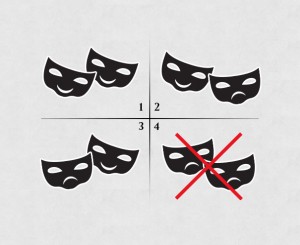When Boring is Fun
Exigence has released, and Reckoning is coming. The PP doom cycle, as it is with every release, is in fill swing.
As the books trudge out of the printers, and the game slowly grinds along, each book holds a bit of promise that you, and your faction, will get the newest, best things. The hope that your faction will “Win” each book and be able to master the tabletop in new ways, with new models and interesting strategies clings strongly to nearly every player. While I’m not immune to these feelings and desires, I really hope that every faction gets to get new and interesting ways to play the game, and that each model in a release brings joy to the people playing that faction.
It makes me fairly sad to see when gamers mope about their releases, because I want them to be as thrilled as I am with each book that comes out and each new toy they get. Its not possible, though. I know this. Some people are prone to seeing the downside in everything.
However, many times the models that are hated on and shouted down the most end up defining the playstyles of the game and turn the game on its head. Prompted by an MTG article and two conversations with friends, I think that that problem is a core issue in gaming itself.
The Big Empty
PP has an enormous catalog. Cryx itself has 16 Warcasters, 20 Warjacks, 17 Units, 6 attachments, 14 Solos, A Battle Engine and A Colossal. That’s 75 options in a single faction. Assuming that each Core 4 Faction is about the same, that’s 300 models and units that can be used in those four factions alone. Some of these models are obviously going to miss, but I’m not convinced that any slot is unusable. Instead, some models are awaiting their time, while other models have had their time come and go, and are awaiting it again.
Unlike MTG, models never rotate out of the game, which has its pros and cons, especially in setting expectations. While it is awesome that I can use Bane Thralls now as the foot infantry they were supposed to be, it does paint a pretty terrible picture that all of my models have to stand up to Banes in order to be even considered. This leads to an ingrained belief that every unit has to be compared to Banes in order to be useful. Instead, every model that comes out has to be evaluated in respect to every other model that has come before it and every model that is in the same book. This creates a situation where there are four categories of releases.
1. Models that look good, and are good.
2. Models that look good, and are not good.
3. Models that look bad, and are good.
4. Models that look bad, and are not good
as game designers, I am sure that Privateer wants to have models of every type but #4, because then you create layers in the game that enable people to discover, innovate and have fun with the game.
but people in miniatures games aren’t looking for fun. They are instead looking to change their lists and get an edge. Here is where things get a bit fuzzier than MTG.
Models in a minis game world, where nothing gets phased out, tend to be looked at in one of two lights: Better than, or not good enough. We are starting to hit the middle territory – good in certain lists – but we overall look at the models that are released in a given book as either replacements or not.
This leads to a terrible amount of circular group thinking around either a single caster or a caster pair that is being evaluated at the time of the book, or model rules, release. Warders, for example, were initially derided, as was the Vessel of Judgement. However, time has shown that both of those models are a staple in their factions and great models on their own.
One, the Vessel, is a good model overall, and example of a model that just needed some table time.
The warders, on the other hand, required a completely different mindset and the use of Grissel 2 – a heretofore underused caster – To bring them to the fore.
What I am really trying to get to is that models in warmachine, and minis games in particular, have to be looked at in a very specific manner. One cannot simply judge the model by its rules alone, but it must be taken into account with every caster and model/unit synergy you can think of. If you look at a model and think that its bad in your lists, with your set up, try and break out of that mold. Look at the model in the light of a different caster, in a different set of models and units. Its easy to dismiss a model based on its initial rules and abilities, when combined with what you want to play. Instead, try looking at the models that come out as trying to expand and even change the way you play.
If you’ve been playing the same way for years, maybe its time to re-evaluate the way you play. Not because you play wrong, but because the armies and lists your building may not be representative of the modern meta. Minis games have so many permutations and ways to play the game that you shouldn’t let any preconceived notions on how everything is supposed to work interfere with your ability to come up with new and interesting lists, if its what your into.

